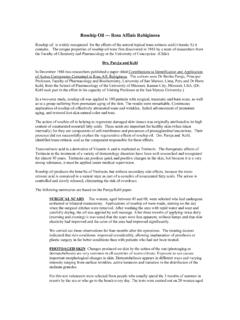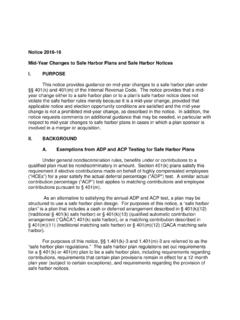Transcription of Chapter 5.7 Dichloromethane - WHO/Europe | Home
1 WHO Regional Office for Europe, Copenhagen, Denmark, 2000 1 Chapter Dichloromethane General description Physical and chemical properties Dichloromethane , CH2Cl2 (DCM), also known as methylene chloride, is a halogenated aliphatic hydrocarbon compound. It is a colourless liquid with penetrating ether-like or mild sweet odour. It is moderately soluble in water (2 g/100 ml at 20 C) and soluble in most organic solvents such as ethanol, ether, phenols, aldehydes and ketones.
2 Its evaporation rate is (reference liquid is butyl acetate = 1). DCM vapours are heavier than air. DCM is normally stable, non-flammable and non-explosive when mixed with air; temperatures above 100 C should be avoided. A wide range of odour thresholds (530 2120 mg/m3) have been reported, but detection occurs around 530 mg/m3 and recognition around 810 mg/m3. DCM is commercially available in high purity (1). Sources DCM may be formed from natural sources, but these are not believed to contribute significantly to global release.
3 The worldwide production of DCM in 1980 was estimated to be 570 000 tonnes, of which 270 000 tonnes were produced in western Europe. Current estimates are that world production is at a similar level to that in 1980 (2). Production of paint stripper, pharmaceuticals and process solvent are the most important industrial areas of DCM use. Other important uses of DCM include foam blowing of polyurethane, metal degreasing, stripping and degreasing in the electronics industry, as a solvent in polycarbonate resin production, in photographic film base manufacturing, and numerous other cleaning and thinning uses.
4 DCM is also occasionally used as an extractant for naturally occurring, heat-sensitive substances such as edible fats, caffeine, cocoa, spices and hops. DCM is also used in consumer products such as paint strippers, with a DCM content of 70 75%, and in hair-spray aerosols containing DCM as a solvent and vapour pressure modifier up to 35% w/w. Other products, such as household cleaning products, room deodorants, and lubricating and degreasing products in aerosol form, may also contain DCM.
5 The diverse nature of its application implies that DCM can be released to the environment to a large extent. Entry to the environment may also occur during production, transportation and storage, as well as from waste disposal sites, industrial effluents and water treatment facilities. Occurrence in air It is estimated that nearly 80% of all DCM produced globally is released to the atmosphere, with potential for 100% release (3). Mean atmospheric levels of DCM observed at 22 locations across Canada in 1991 1992 ranged from g/m3 to g/m3 (4).
6 In surveys involving 20 cities in the United States, the average levels of DCM varied from not detectable to 570 g/m3 (5). The annual mean concentration at three sites in the San Francisco Bay area over a four-year period, based on two 24-hour samples taken each month, indicated a slight reduction in average levels from g/m3 to g/m3 over the period 1987 1990. Monthly Chapter Dichloromethane Air Quality Guidelines - Second Edition WHO Regional Office for Europe, Copenhagen, Denmark, 2000 2 DCM values were generally highest in winter, declined to a minimum in April and increased in the autumn (6,7).
7 Mean background concentrations in rural areas are g/m3 . The arithmetic means of DCM measured in hazardous waste sites in New Jersey ranged from g/m3 to g/m3. At one site, a mean concentration of 40 g/m3 and peak levels of 190 g/m3 were found (8). DCM was found in more than 75% of samples taken in the ambient air at a New Jersey sewage treatment plant, with a peak concentration of 2180 g/m3 (9). In general, the mean concentration of DCM in indoor air is higher than that in ambient air by a factor of about 3 (10).
8 Based on preliminary results, the mean concentration in indoor air in 757 homes across Canada was g/m3 (maximum = 1690 g/m3) (11). Mean levels of DCM in samples of indoor air in a small survey in Toronto were similar, ranging from g/m3 to g/m3 (12). In a non-occupational indoor environment, the time-weighted average (TWA) in a room without ventilation varied between 460 g/m3 and 2980 g/m3 during the use of paint removers containing Dichloromethane (13).
9 Atmospheric fate process It is assumed that the photochemical degradation induced by hydroxyl radicals is the fundamental process in the destruction of DCM in the environment. Photooxidation and photolysis of DCM at sea level are expected to be minimal, whereas conditions in the upper troposphere will allow photooxidation to occur as a result of photochemically generated hydroxyl radicals. The life-time of DCM in the atmosphere is 40 160 days (2). These values depend on the concentration of hydroxyl radicals and the light intensity in the region (14).
10 Migration of DCM from the troposphere to the stratosphere was estimated to take place within 5 10 years. This implies that enters the stratosphere. Based on global estimates, approximately of DCM in the troposphere is washed out annually by precipitation (15). Conversion factors 1 ppm = mg/m3 1 mg/m3 = ppm (at 20 C and 1013 hPa) Routes of exposure Air Exposure of humans to DCM occurs primarily through air. Exposures are highest in occupational settings and near sources of emissions.










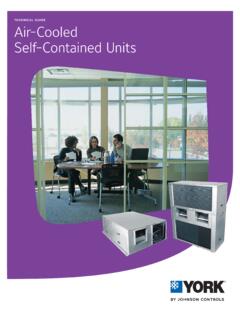
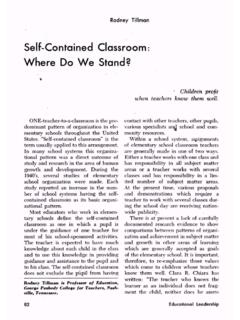
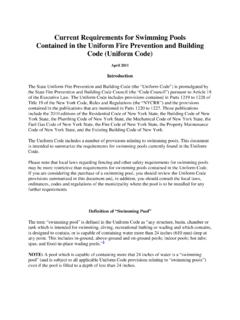
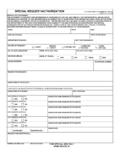
![Form GST ITC -03 [See rule 44(4)] Declaration for ...](/cache/preview/c/d/1/5/2/f/5/4/thumb-cd152f54d11bed204d4d28a8f1b1e72c.jpg)
